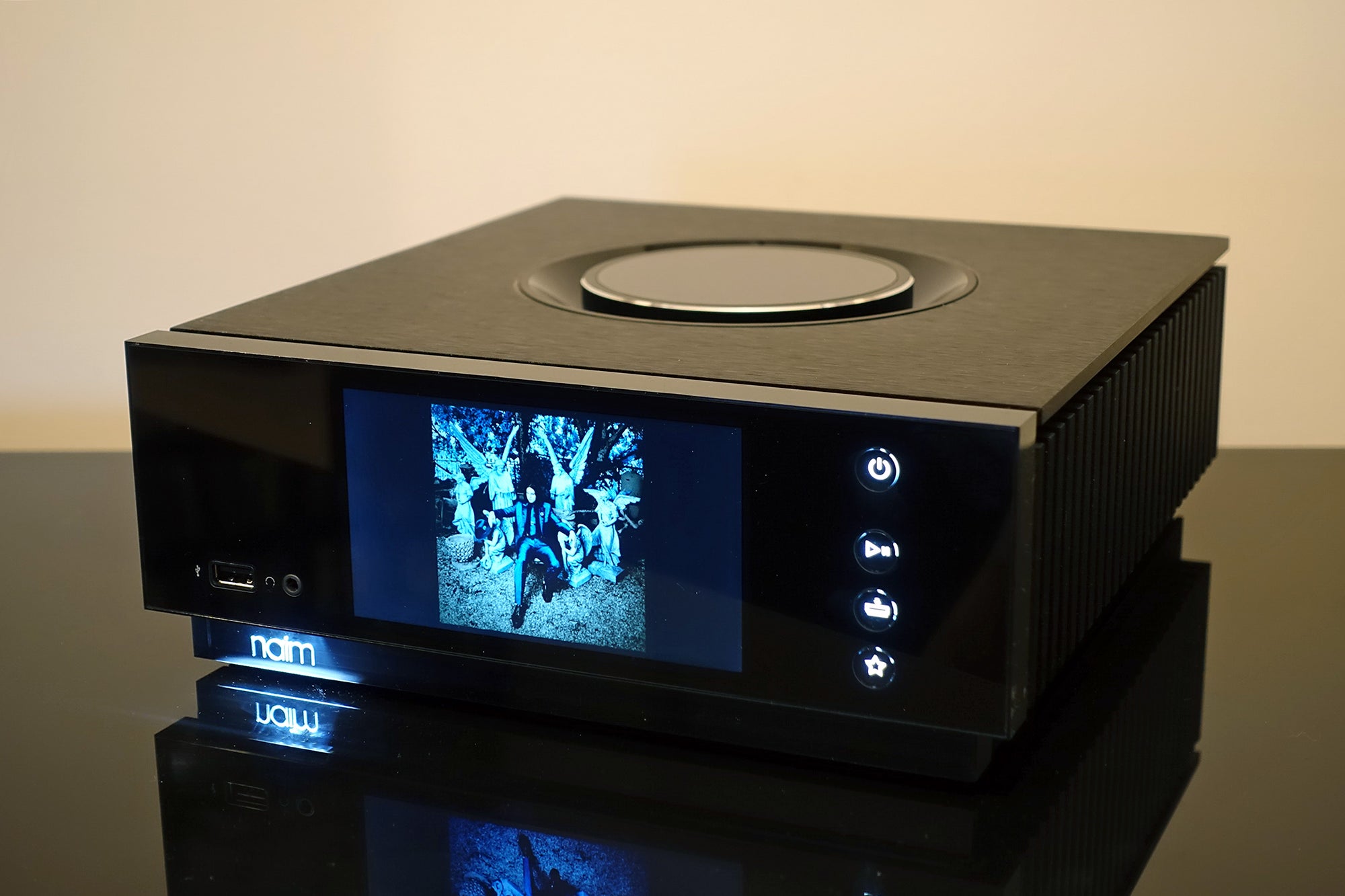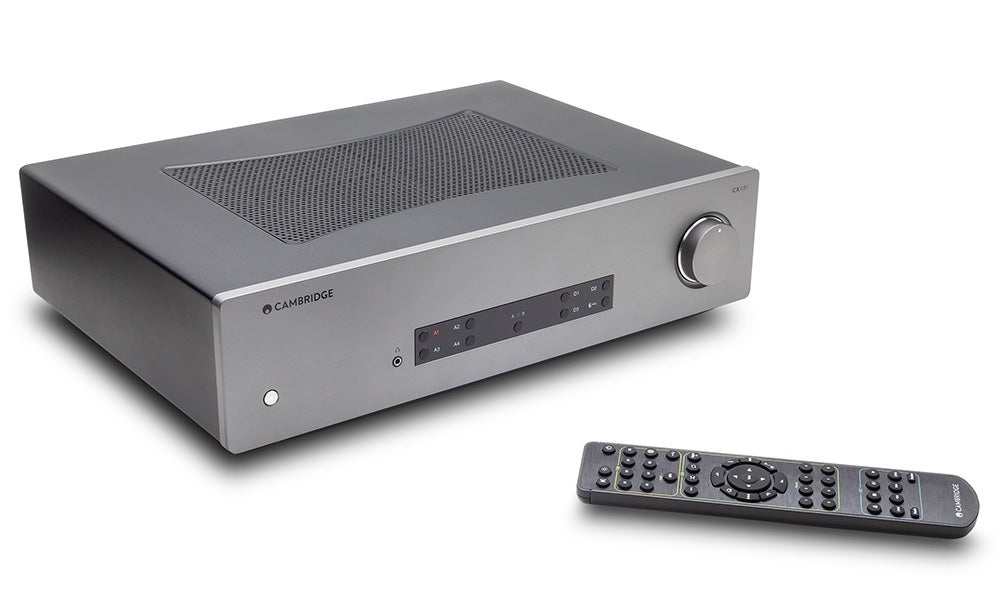Anker Soundcore X600 Review
Does the Soundcore X600 live up to its own lofty claims?




Verdict
The Anker Soundcore X600 is pitched as a super high fidelity wireless speaker. This plays out better in the tech than the actual sound, but those willing to fiddle in the app can tweak the audio quite significantly.
Pros
- Part metal casing
- Interesting “spatial” audio mode
- Great water resistance
- Low bass floor
Cons
- May not take physical abuse as well as some
- Mid range lacks substance and detail
- It’s high fidelity in tech rather than sound quality
Key Features
- Bass UpThe Bass Up mode lets you control how bassy the sound is with a single button press, from polite to party
- Spatial audioThe X600 uses an upward-firing driver and sound processing for Anker’s own take on spatial audio
- LDACThis speaker supports LDAC, for high bit-rate streams over Bluetooth
Introduction
The Anker Soundcore X600 feels like a departure for Anker. It has grown to be one of the most reliable names in low-cost phone accessories including, yep, the humble Bluetooth speaker.
This is a much higher-end model, though. It’s larger than the Anker Soundcore speakers I’ve recommended to budget buyers in the past, and at £200 it has to be able to compete with some super-solid competition from brands like JBL, Ultimate Ears and even Sonos.
Its special trick is an upwards-firing driver. This, with a little help from some clever digital signal processing, is designed to emulate the sort of expansive spatial magic of a Dolby Atmos speaker array.
Nice concept, but the Anker Soundcore X600’s often sterile-sounding mids show that when it comes to music, the basics of tuning and tone matter more than the show-off stuff.
Design
- Metal and tough plastic construction
- Integrated handle
- 1.95kg weight
If you took the classic boombox design and tried to give it a style of its own, one with a more grown-up look, you might end up with something like the Anker Soundcore X600.
Its entire body is silver or dark grey, tones I commonly see used in the casings of ultraportable laptops.
This construction lets the Soundcore X600 look less out of place in the average 2023 home than something like the JBL Xtreme 3 – a speaker I have a lot of affection for, but would I want it in my living room 24/7? Maybe not.
The Anker approach makes you question how tough this thing actually is, though. The front half of the body and the handle are coated aluminium. Its back half is plastic, as is the underside. The control panel up top is plastic with what feels like a lightly rubberised surface.
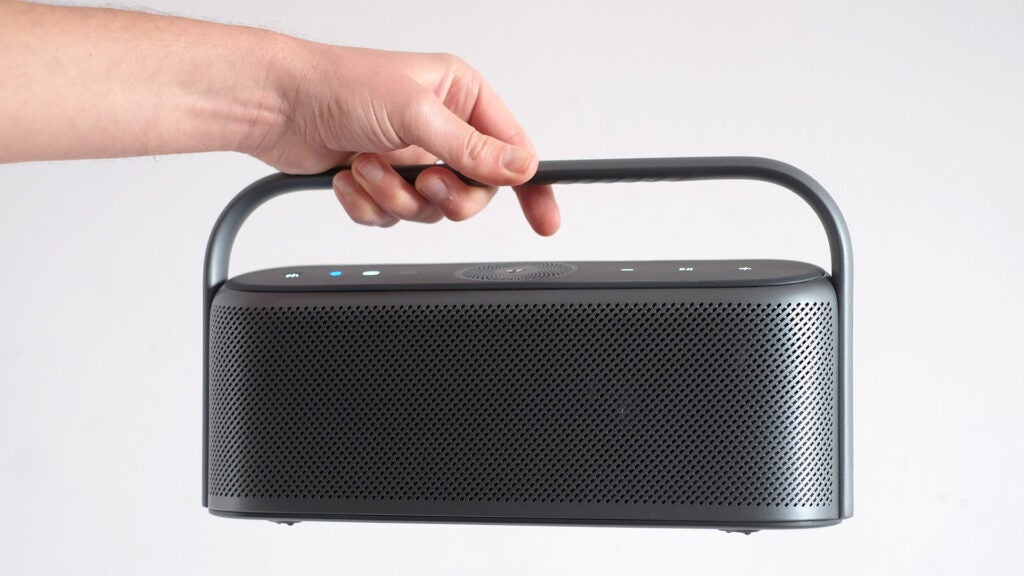
This is a dense, hefty speaker that weighs just under 2kg, or 1947g according to my scales. I do feel less confident flinging this thing around than the nylon weave-topped speakers from JBL or Ultimate Ears, though. Harder surfaces mean the threat of a scratched anodised finish or, even worse, cracked plastic, loom in the background a little.
However, let’s get real. Most of us are more likely to take the Soundcore X600 to a park picnic or a BBQ than up a mountain. It also has excellent IPX7 water resistance, meaning it is made to take a full underwater dunking. Just make sure the rear rubber port connector is in place. This protects the USB-C charging socket and the 3.5mm aux input.
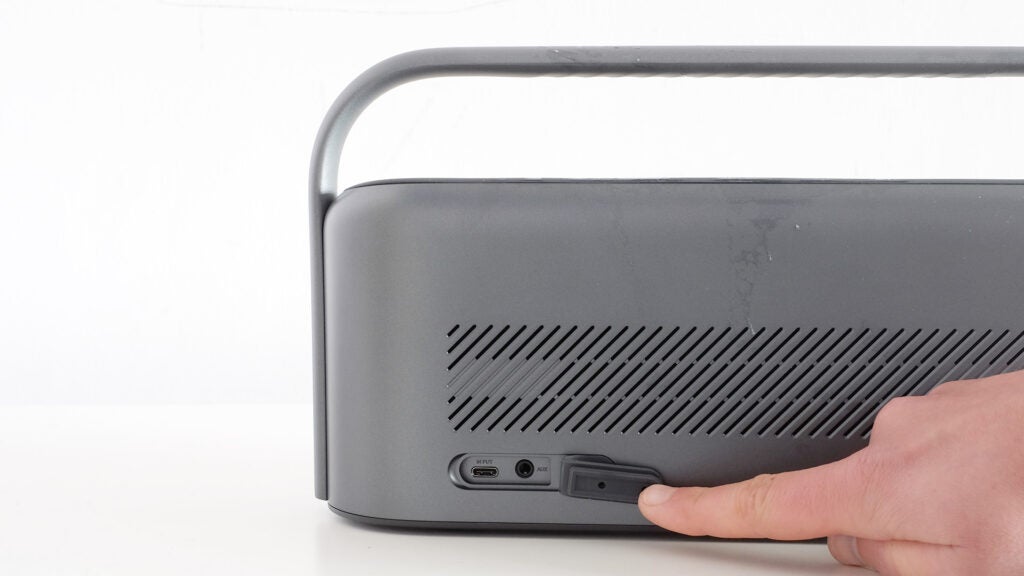
Features
- LDAC codec support
- Light-up buttons
Anker’s Soundcore X600 has a companion phone app, but you only need to use if it you want to access the speaker’s EQ presets or create your own. The rest of your key options are available right there on the speaker’s top surface.
This does not rely on capacitive touch surfaces. There are real clicky actuators under those icons on the top plate, and they light up when the speaker is active.
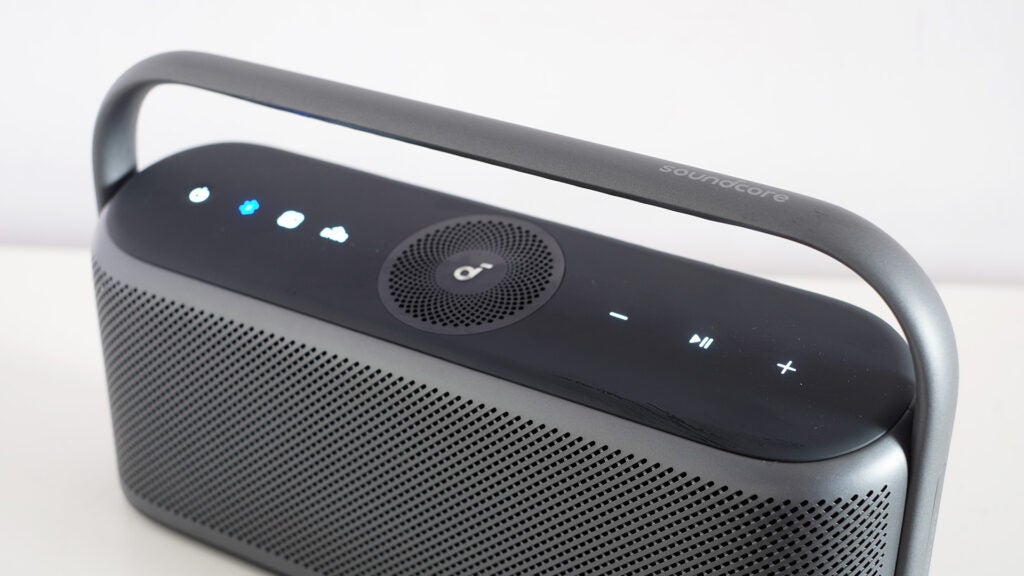
That dotted circle in the middle? This isn’t a button, it’s where the Soundcore X600’s upwards-firing driver lives.
While positioned as a more advanced Bluetooth speaker than most, this is largely a pretty low-fuss, simple unit. And Anker claims its battery lasts an ok 12 hours at moderate volumes, between the 11 hours of the Sonos Move or the 15 hours of the JBL Xtreme 3, but they aren’t in completely different stamina universes. I found the stamina was a little lower than this when spread over a few sessions, but not dramatically so.
Sound Quality
- Fairly deep bass
- Weak mid-range
- Custom EQ software is powerful
Anker calls the Soundcore X600 the world’s first portable high-fidelity speaker. The justification? It has LDAC support, which uses higher bit-rates than the standard SBC Bluetooth codec.
Its “spatial” audio is more interesting. This has been a tech buzzword term for a while now, but the Soundcore X600’s take on it is pretty simple. There’s an upward-firing driver on the top, and some software manipulation is used to further extend how “big” the speaker sounds.
Alongside the top driver, the Soundcore X600 has two relatively small front-loaded woofers, two tweeters and an oblong passive radiator on the back, which Anker doesn’t appear to mention on its website.
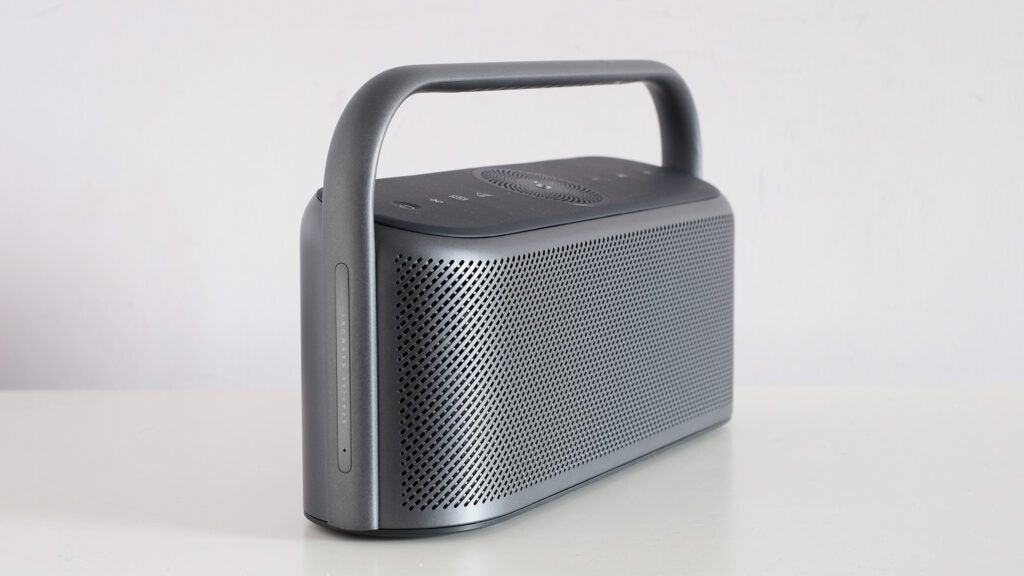
The Anker Soundcore X600 can sound good. It can go loud and it has, thanks to that passive radiator, good bass depth for a speaker of this size. However, my main response to the X600 is one of frustration as I don’t think Anker has done a particularly good job on some aspects of its tuning.
You have two key controls on the Soundcore X600 itself, Bass Up and the Spatial audio button. Each makes quite a profound difference to the sound, and I have to wonder whether their impact has been deliberately emphasised, by somewhat neutering the X600 when they are both off.
Turning off the Bass Up mode seems to do the equivalent of all but turning off the passive radiator, reducing low bass to quite a severe extent. I recommend keeping it switched on most of the time, but it’s not useless. Want to play music while other people in the house are sleeping? Turning off Bass Up means you’ll actually be able to have the volume higher without disturbing anyone.
The Spatial mode I have some more of a problem with, because of the effect on the tonal balance of the Soundcore X600. When switched off, the X600 sounds much more boxy. Its soundfield is smaller and there’s not a huge amount of spark to the audio.
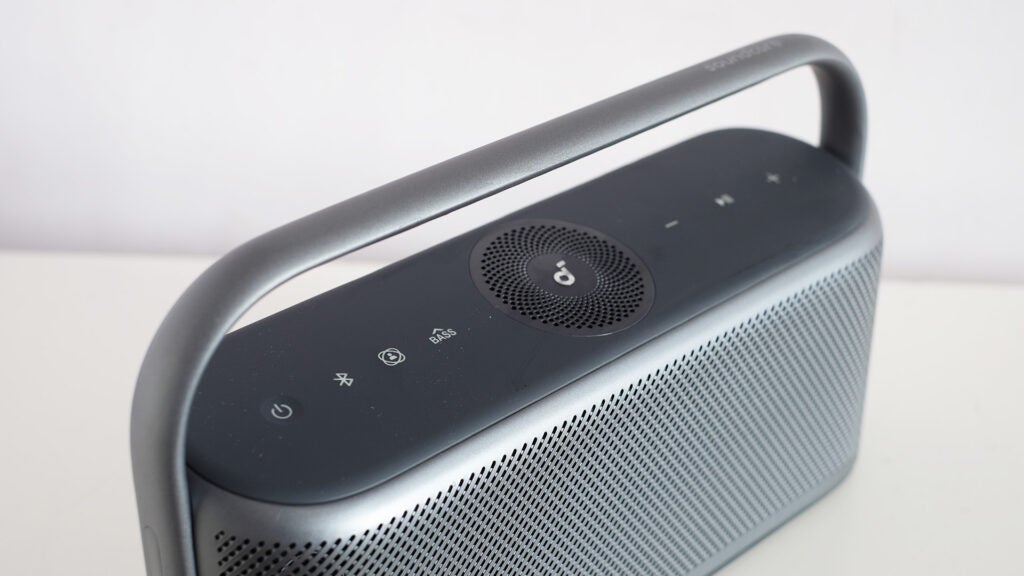
Spatial mode acts like a shot of adrenaline. It opens up the sound noticeably, and adds a good deal more energy to the treble and upper mids.
Your first impression will be “this is more like it.” The Soundcore X600 appears to spring to life. It has a problem, though. In this mode the mids seem skewed and scooped, with all of the projection coming from the upper-mids.
It leaves vocal lines with little of the force of delivery they should have, pushing them into the background. Songwriter-lead music is robbed of its sense of musicality and I find the mids sound quite sterile or synthetic as a result.
I tried fiddling around with the Soundcore app’s EQ presets to improve matters, but didn’t have much luck. That said, you may want to jump off the default Soundcore Signature mode and switch to Balanced if you will listen at higher volumes as the boosted deep bass of the Signature mod makes things turn stodgy when pushed.
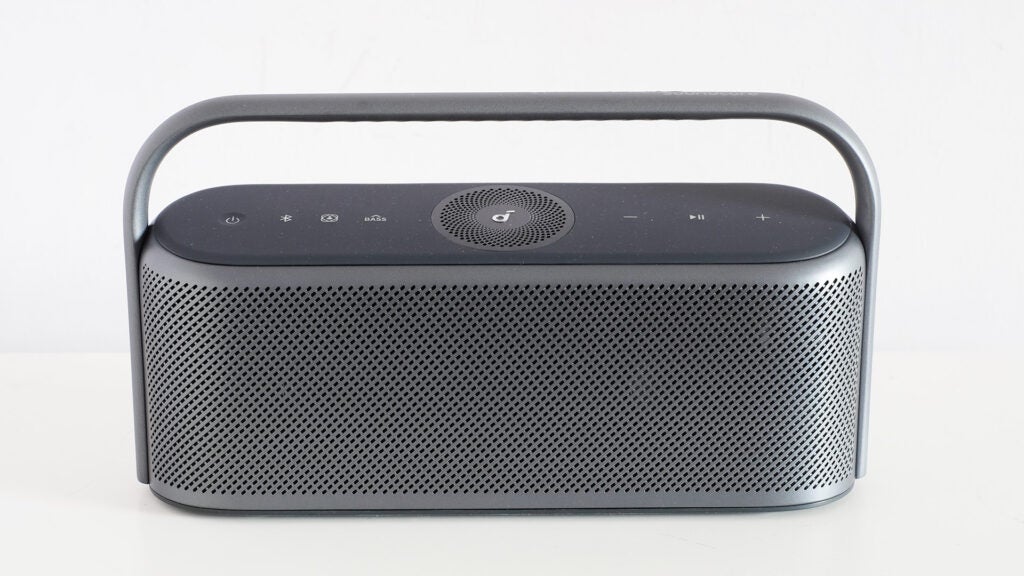
You can have more of an impact on the mids if you create your own custom EQ plan. I was able to bring back the lost projection of those mid-heavy vocal lines by carving out the sort of midriff muffin top frequency curve I don’t think I’ve ever made before. However, it works. The custom EQ tools are powerful, but how many X600 owners are actually going to use them?
I don’t think everyone is going to be bothered by the Soundcore X600 sound in the way I was. The real attempt at delivering sub-bass, the neat spatial audio concept and the respectable maximum volume – all great. Maybe properly voiced mids are for boomers now, but I wouldn’t recommend this speaker too strongly if you listen to more vocal-led music than pure electronic stuff.
Latest deals
Should you buy it?
Smart looks, good portability: The Anker looks smarter than some larger Bluetooth speakers in this class, making it a good for at home use with the occasional trip outside — which is is certainly ready for thanks to IPX7 water resistance. It also has good bass depth.
The sound isn’t as impressive as the tech: There’s a sense Anker has focused more on the sound tech than the actual sound here. The lead mode robs the mids of their power, pushing vocals into the background too much.
Final Thoughts
The Anker Soundcore X600 is one of Anker’s highest-quality speakers to date. It has an upwards-firing driver for more expansive sound, and a special mode to make the best use of it. There’s LDAC too, a high-quality wireless codec.
I think Anker has the capacity to make a better all-round speaker of this type in future, though.
When in its top sound mode the mid-range loses all its substance, making vocal lines seem weaker and, in some cases, synthetic. You can take control of this using Anker’s software, but not without some effort.
How we test
We test every wireless speaker we review thoroughly over an extended period of time. We use industry standard tests to compare features properly. We’ll always tell you what we find. We never, ever, accept money to review a product.
Find out more about how we test in our ethics policy.
Tested for several weeks
Tested with real world use
Battery testing performed
FAQs
It has IPx7 water resistance, meaning it can be fully submerged in water.
This is a Bluetooth-only speaker. It does not have Wi-Fi.
It does not support aptX but it does offer LDAC, a high-quality codec supported by most Android phones.



